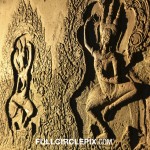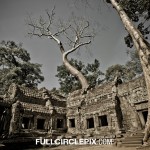I’ve always been charmed by places of worship. It’s cultural resemblance to the country, the spiritual connection and ancient architectural styles. Furthermore, being Asian, superstition binds society alike regardless of ethnicity.
The temples of the Angkor area number over one thousand, ranging in scale from nondescript piles of brick rubble scattered through rice fields to the magnificent Angkor Wat, said to be the world’s largest single religious monument. Many of the temples at Angkor have been restored.
Angkor had been the largest preindustrial city in the world, with an elaborate system of infrastructure connecting an urban sprawl of at least 1,000 square kilometres (390 sq mi) to the well-known temples at its core.
The Angkor Wat complex was built by a Khmer king around 1,150 AD, required thousands of laborers and hundreds of tons of sandstone to complete over a 40-year period. A symbol of national pride – Angkor Wat, considered the Sixth Wonder of the World.
Today, it contains the magnificent remains of the different capitals of the Khmer Empire, from the 9th to the 15th centuries. The influence of Khmer art, as developed at Angkor, was a profound one over much of South-East Asia and played a fundamental role in its distinctive evolution.
Its history tells of hard work and perseverance, truly a place for inspiration.










